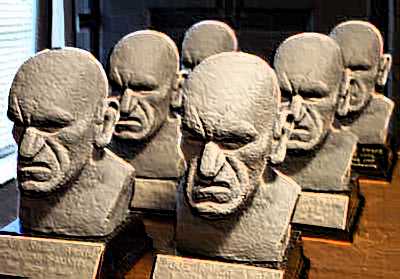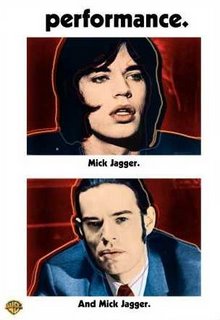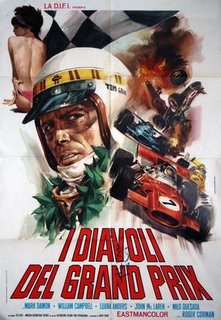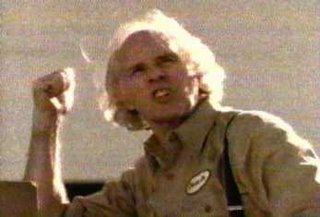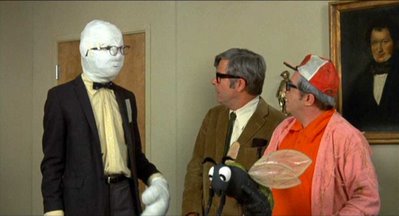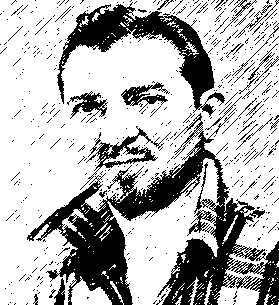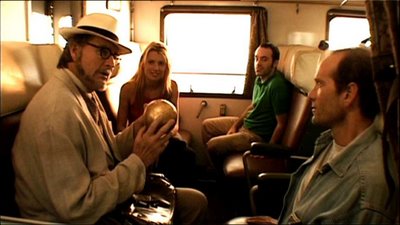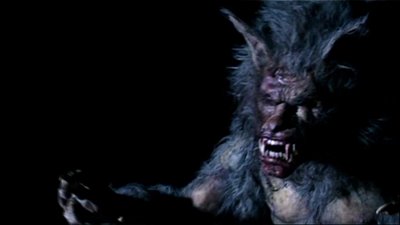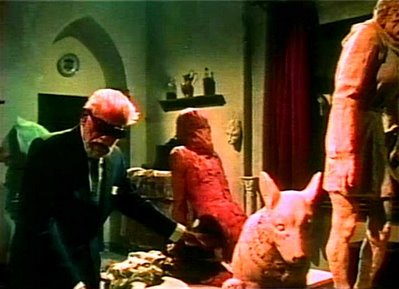Anita Strindberg as the dissolute Julia Durer.
LIZARD IN A WOMAN'S SKIN
Una lucertola con la pelle di donna
1971, Shriek Show, DD-5.1/2.0/MA/SUB/+, 103m 19s, $19.95, DVD-0
One of the earliest Italian gialli produced in the wake of Dario Argento's hugely successful THE BIRD WITH THE CRYSTAL PLUMAGE, Lucio Fulci's LIZARD IN A WOMAN'S SKIN was a far steeper plunge into surrealism and strangeness and, as such, proved just as influential as -- if not moreso than -- Argento's Antonioniesque shocker.
Florinda Bolkan stars as Carol Hammond, the bourgeois daughter of respected lawyer-politician Edmund Brighton (Leo Genn), introduced as a careworn figure pushing through people crowded into the passageway of a train, who turn naked as her dream segues into an erotic, wind-tossed encounter with Julia Durer (Anita Strindberg). Once Carol regains consciousness, we realize that Julia is her nextdoor neighbor in a London apartment complex, socially snubbed by most residents for her psychedelic orgies -- a woman to whom Carol has never actually spoken, as she confesses to her psychiatrist (George Rigaud). One night, a particularly loud party inspires Carol to dream of murdering Julia. The morning after, Julia is found dead in exactly the manner dreamed, with Carol's fur coat and letter opener left at the scene of the crime. In Carol's dream, she realized after stabbing Julia that there were two witnesses to her deed, two white-eyed hippies gazing at her from a mezzanine within the apartment. This aspect of the dream also proves real when Carol's stepdaughter Joan (Ely Galleani, billed as Edy Gall) makes the acquaintence of these hippies, whose behavior subsequently turns calculatedly predatory. No description of the film's plot can really do it justice, as it was made to be experienced -- almost in the Jimi Hendrix sense of that phrase. Though conceived and executed by a director who reportedly hated hippies and despised the drug culture, LIZARD IN A WOMAN'S SKIN is a decidedly psychedelic entertainment, graced by one of Ennio Morricone's most volatile yet sensual giallo scores.
Co-scripted by Fulci and frequent collaborator Roberto Gianviti, with additional credit extended to José Luís Martínez Mollà and André Tranché to mollify Spanish and French co-production quotas, LIZARD is overly contrived on an explicatory level but dazzles as a cinematic construction. In this way, it deceptively appears to be as indebted to Brian De Palma as to Argento or Hitchcock, though it braves into areas of sensuality and technique (split screen, split diopter shots, etc) two full years before SISTERS and almost a decade before DRESSED TO KILL, the De Palma film LIZARD most sleekly resembles. If the film's resolution seems needlessly obscure and distended, one reaches it through a procession of marvelously disorienting suspense sequences in which one can see the pictorial influences of Francis Bacon and Salvador Dalí, among others. In the extended sequence in which Bolkan is pursued through the now derelict Alexandra Palace by Mike Kennedy, the vast emptiness of the place suggests not only the spectral landscapes of some Dalí paintings but also sequences in Hitchcock in which characters are dwarfed by the passive countenances of national landmarks, as in the British Museum sequence of BLACKMAIL. The frequently impressive cinematography was the work of Luigi Kuveiller (DEEP RED, A QUIET PLACE IN THE COUNTRY, FLESH FOR FRANKENSTEIN), assisted by Mario Bava's former operator Ubaldo Terzano.

Carol (Florinda Bolkan) could kill that noisy neighbor of hers... but does she?
When Shriek Show first released LIZARD IN A WOMAN'S SKIN in February 2005, it provoked a storm of controversy within Internet discussion groups. While preparing this earlier release, Shriek Show's disc producers were aware that the English language print they had acquired -- titled SCHIZOID (95m 33s) and originally released by American International -- was far from complete, even after two separate English source elements had been cobbled together. They sought to smooth over its shortcomings by adding a second disc featuring a cropped, softish, standard framed transfer of the Italian version (97m 48s PAL, 101m 58s real time), subtitled in English, which contained additional material exclusive to the Italian version.
In the wake of its release, Italy's Federal Video issued a Region 2 disc of the film that included the far handsomer, anamorphic presentation of a unique edition -- essentially the Italian cut, with some footage exclusive to the AIP version seemingly ported back into the continuity via the Shriek Show presentation. It ran 98m 8s in PAL, or 102m 19s in real time. This version's reliance on the SCHIZOID edition was most obvious during the scene of Julia's murder, which AIP had treated to a distorting ripple-like optical to obscure the nudity of Bolkan and Strindberg and details of the film's pivotal stabbing; the Federal DVD presented the scene in a combination of rippled and unrippled footage, evidently because the aptly-named SCHIZOID included individual shots not found in the Italian cut. The R2 disc also offered a "deleted scene" not edited back into the picture. Despite this oversight and the fact that the Federal DVD offered nothing in the way of English subtitles, Media Blasters/Shriek Show was raked over the coals in Cyberspace because a superior-looking element had been found to exist, which the company was berated for not importing and subtitling.
Shriek Show is hoping to make good for their earlier release by issuing a new and improved single-disc remaster of Fulci's classic psycho-thriller that, they hope, will provide the best of all possible Lucertoli for the film's admirers. Having been given a first look at the new disc, I can attest that this new version is -- like the Federal presentation -- a unique cut of the film that was likely never shown in any theater anywhere in the world. It runs a full minute longer than Federal's earlier composite and is certainly the most complete version of the film likely to surface on DVD. I've heard that Studio Canal are the current custodians of the film's original negative, but while a negative would ensure the best possible picture quality, it would carry no guarantee of being more complete. Only the scenes included in the SCHIZOID cut were actually dubbed into English, under the direction of AIP line producer Salvatore Billetteri. Also, mind you, it is unlikely that Studio Canal would allow any negative out of their hands, so anyone licensing the film from them would be required to accept the transfer they were given. The only way to arrive at a complete version of this film would appear to be by cobbling together the English and Italian versions, as Shriek Show has done here with the help of a new Italian print element.
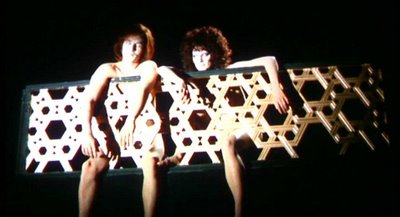
Mike Kennedy and Penny Brown as the tripping witnesses to murder.
So how does Shriek Show's second go at LIZARD IN A WOMAN'S SKIN differ from, or improve upon, their first? The following is a breakdown of some points of comparison between the new version and its predecessors, which has been assembled with the help of Shriek Show's Richard York:
2:08-2:30 The scene of Carol walking through the masses of naked people in the train's passageway has been lengthened by 22 seconds.
4:00-4:30 During the first lesbian encounter between Carol and Julia, there is an additional shot exposing Florinda Bolkan's backside as Anita Strindberg pulls the fur coat off her shoulders. This shot appeared in neither version of the film included in Shriek Show's previous release, though an abbreviated version of the shot appeared in SCHIZOID. It should be mentioned that Federal's R2 version was lacking some moments of Bolkan writhing and moaning in her bed before she wakes up, which were included in SCHIZOID.
9:08-9:18 and 9:48-10:16 During these time codes, some shots not seen in SCHIZOID -- most of which involved nudity of some sort -- were reinserted into the quick-cut montage.
10:38-11:04 The scene of Strindberg removing her top, walking toward a man and kissing him was not in Federal's R2 version but was included on their DVD as a "deleted scene." The scene was already present in SCHIZOID.
17:09-17:30 The Francis Bacon-inspired nightmare sequence in SCHIZOID omitted the shot in which a blue-faced Ely Galleani was shown to be cradling a tumult of gooey intestines spilling from her midsection, as well as much of Carlo Rambaldi's gigantic swan-thing. This material was reinserted.
17:32-19:26 As mentioned earlier, in SCHIZOID, the murder of Julia by Carol was treated to a rippling optical effect, presumably to obscure nudity and violence -- and possibly to heighten the ambiguity of whether or not it's a dream. On the Federal R2 disc, this scene cuts back and forth between rippled and non-rippled material in an effort to reincorporate footage found only in the SCHIZOID cut. The Italian master provided to Shriek Show contained the entire scene unrippled, which is what they have opted to include in their new release -- providing a wholly unobstructed view of the proceedings.
26:10-26:21 The scene of Jean Sorel, Ely Galleani and Silvia Monti walking and talking, expressing concern for Florinda Bolkan's character was not previously included in SCHIZOID or the Italian version included on Shriek Show's original release. The dialogue scene exists only in Italian and thus had to be inserted into the otherwise English-language film in Italian with English subtitles.
26:22-30:06 Immediately following the above scene is the paranoid dinner sequence during which Carol receives the phone call from her neighbor, then frantically looks for her notes. This scene was in Shriek Show's earlier standard-framed Italian version, but not in SCHIZOID.
30:24-31:19 A tense-looking Florinda is smoking cigarettes on a sofa while Silvia sits at a table. Ely brings Silvia a drink and some brief dialogue is exchanged. This nearly minute-long scene was likewise not on any previous version and had to be subtitled. This scene leads up to Florinda barging in on the crime scene.
32:17-32:24 Inserted back into the scene of Carol's visit to the crime scene were 7 seconds of her being conforted by her husband (Sorel) and a disquieting close-up of Julia's dead body.
53:53-54:06 This scene of Sorel and Monti's extramarital lovemaking was extended by 13 seconds of additional kissing and rolling around.
58:26-59:12 Finally, the infamous scene of Carol's accidental discovery of the clinic's room of conscious, vivisected dogs -- not included in SCHIZOID -- has been reinserted.

Inspector Corvin (Stanley Baker) brings cold comfort to Carol as she mourns a relative.
Shriek Show's forthcoming release thus improves upon earlier attempts in meaningful ways and warrants recognition as a significant upgrade -- indeed, it's the most integral version we're likely to see. Nevertheless, the disc has some modest faults that must also be noted.
When compared to the Federal DVD, there is no question that the Italian disc is cleaner, sharper-looking, with more realistically modulated color. (Mind you, it's also incomplete and in Italian only, with some faux compositing -- like the on/off rippling -- that favor AIP's preferences over those of Fulci. Though LIZARD is of Italian origin, it was set and shot in London and acted almost entirely in English, with some principals like Baker and Genn doing the actual dubbing, so the English track takes precedence above any other.) For some reason, Shriek Show opted to brighten the feature's overall color, as I suppose was in keeping with their predominant source, the SCHIZOID element; I felt it necessary to turn the color settings of my monitor down a notch or two, to a more realistic, less distracting register, after which the film-like quality of the anamorphic image was very pleasing. That the new master made use of more than one source element is not particularly evident, showing that great pains were taken to achieve a consistent look throughout. I noticed brief instances of glare and grain, possibly inherent in the source elements rather than the transfer, but no cause for common complaints like overdone edge enhancement. Certain scenes are mildly marred by fine bluish scratches, which I didn't find objectionable, as it's better to have such reminders of 35mm film stock than too much digital cleanup. In comparing footage shared by this new transfer and Shriek Show's earlier SCHIZOID transfer, I found the new transfer more vivid. The audio options are English 5.1 and 2.0 mono, and Italian 2.0 mono (viewable with English subtitles). My sampling of the 5.1 option found that it didn't do much but send the mono signal equally from all five channels, which I found spatially disorienting and quickly did without. Perhaps I gave up too early, as I'm told the track does include some directional effects, particularly during the film's celebrated bat attack sequence.
With the exception of the several Fulci trailers carried over from the previous release (including the one featuring a ponderous epigraph by author "M. Hawthorne"), the new disc's extras have all been imported from the R2 disc and given English subtitles. These consist of a generous 31m discussion of Fulci and this particular film by Prof. Paolo Albiero, co-author of the book IL TERRORISTA DEI GENERI: TUTTO IL CINEMA DE LUCIO FULCI (something I need to acquire). Albiero's talk, at once intellectual yet entertaining and approachable, I found quite engrossing; it deals with LIZARD on conceptual and generic levels, places the film intelligently in context with Fulci's other work (Albiero feels that Fulci's horror films were "his ruin," in the overall story of his career, though he discusses them with obvious appreciation), and Albiero speaks with warmth and confidence. The talk is followed by Albiero's concise history of the film's censorship problems abroad (5m 51s). The feature's original Italian title sequence is also included.
Having compiled such a nearly definitive package, it's all the more regrettable that Shriek Show chose not to go all the way by carrying over from their original release Kit Gavin & Mike Baronas' "Shedding the Skin" (33m 44s) -- a terrifically thorough and entertaining featurette including interviews with the surviving cast and effects men, as well as visits to original shooting locations. The absence of this most valuable labor of love from the new release makes it essential that fans of the film either hold onto, or belatedly acquire, the original Shriek Show two-disc set.
Bear in mind that this article is a preview; Shriek Show's LIZARD IN A WOMAN'S SKIN will not street until March 17. Minor quibbles aside, it's an impressive disc with absorbing extras -- and likely to stand out as one of the most important genre film restorations of the year. Where this title is concerned, we're never going to get completeness and perfection, but this presentation comes remarkably close to achieving just that.
 In today's mail, I was surprised and pleased to find an advance copy of Dark Sky Films' KILL BABY KILL (no punctuation on the cover). I had some involvement with this disc, and since KBK is my favorite of all Mario Bava movies, I'm feeling new-papa proud. Since I can't very well pass out cigars, I thought I would pop the disc into the old computer and treat Video WatchBlog visitors to some early screen grabs, which you can savor in anticipation of its March 27th release.
In today's mail, I was surprised and pleased to find an advance copy of Dark Sky Films' KILL BABY KILL (no punctuation on the cover). I had some involvement with this disc, and since KBK is my favorite of all Mario Bava movies, I'm feeling new-papa proud. Since I can't very well pass out cigars, I thought I would pop the disc into the old computer and treat Video WatchBlog visitors to some early screen grabs, which you can savor in anticipation of its March 27th release. The disc also includes the dream-come-true featurette "Kill, Bava, Kill," in which David Gregory takes Lamberto Bava back to the film's original filming locations -- it's a nominee for next year's Rondo Award for Best DVD Extra, to be sure. There is also a trailer and a stills gallery that includes the full set of German lobby cards (in Germany, the film is known as DIE TOTEN AUGEN DES DR. DRACULA, or "The Dead Eyes of Dr. Dracula"), some extremely rare Italian fotobusti (I don't have these myself!), and other goodies. The unsigned back cover copy, I hear, was written by VW's own Richard Harland Smith.
The disc also includes the dream-come-true featurette "Kill, Bava, Kill," in which David Gregory takes Lamberto Bava back to the film's original filming locations -- it's a nominee for next year's Rondo Award for Best DVD Extra, to be sure. There is also a trailer and a stills gallery that includes the full set of German lobby cards (in Germany, the film is known as DIE TOTEN AUGEN DES DR. DRACULA, or "The Dead Eyes of Dr. Dracula"), some extremely rare Italian fotobusti (I don't have these myself!), and other goodies. The unsigned back cover copy, I hear, was written by VW's own Richard Harland Smith.

